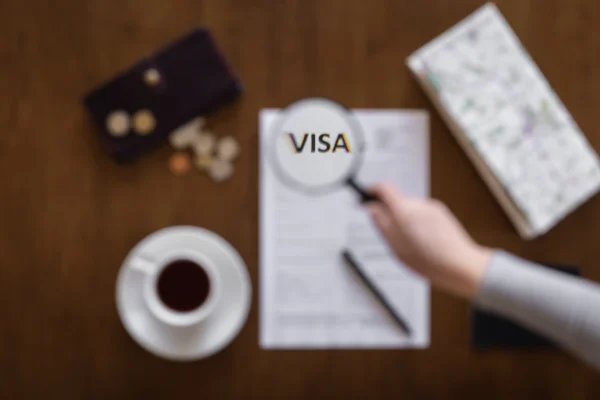Definition of a visa
A visa is a document necessary for travelers entering a foreign country for a certain period of time. As a rule, the process of getting a visa should be completed before the travel starts. Depending on the nationality of a traveler, it may be possible to obtain a visa at an embassy, consulate, or online. Some countries also offer the service of visa on arrival.
The aim of the introduction of visa requirements by most countries is to monitor all incoming travelers and ensure the safety of both foreign visitors and citizens of the countries.
How it started
The first travel documents were already known in ancient times. The first mention of a travel passage to Judea is in the Hebrew Bible, dating back to 420 BC.
However, many years passed before the first passport was issued — it was only issued at the turn of the 14th and 15th centuries.
The outbreak of World War I made passports obligatory for crossing the border, and a visa was often also required for travel abroad. Passports were also used once the war ended, and the League of Nations in Paris established the Nansen passport, intending to combat the refugee crisis and loss of nationality.
Another crucial point in the history of travel documents was World War II, which caused a huge migration wave that led to stricter border controls. At that time, it was necessary to have both a passport and a visa to travel abroad.
In the 21st century, both passports and visas have been revolutionized. Now, biometric passports are standard, while getting a visa without leaving home and receiving a confirmation via email doesn’t shock anyone.

Methods of getting a travel visa
The most common ways to obtain a visa for travel include:
- an in-person application at the embassy or consulate of a country you plan to visit (traditional visa)
- an online application using any electronic device connected to the Internet (electronic visa)
- upon arrival at the entry point (Visa on Arrival)
Visa requirements
The requirements for applying for a visa differ from country to country and depend on the applicant’s nationality and the type of visa they wish to apply for.
Nevertheless, the documents necessary for the online visa application are most often similar. They include a valid passport, an applicant’s face photograph, and sometimes some supporting documents, e.g., proof of hotel reservation and flight tickets.
Moreover, as the entire visa application is online, an applicant needs to have access to a valid means of online payment, an active email address, and a working electronic device.
Choose a country from the map and check the visa requirements for your desired destination.
Online visa application instruction
The online visa application process looks the same regardless of the country of your destination. In general, there are a few steps that must be followed. These steps include:
- Fill out a short online form: Provide all required information, such as basic personal data, travel details, etc.
- Cover the processing fee: Choose one of the available options for online payment and pay the service fee.
- Upload necessary documents: Upload previously prepared documents, which may vary depending on the visa type, your nationality as well as the country of the visa issuance.
- Refresh your email inbox: Shortly after completing your form, covering the fee, and uploading your documents, make sure to refresh your email address and check if the confirmation email has been sent.

Available visa types
The most common visas that can be issued depending on the traveling purpose are as follows:
- tourist visa: a permit issued for tourism-related purposes; tourist visas are usually granted for short-term stays and cover only leisure and recreational activities;
- medical visa: a visa issued for the purposes of medical treatment in a foreign country; there are certain requirements that must be met for this visa type, including evidence from a doctor confirming the patient’s condition and documents related to the planned treatment;
- transit visa: this visa type is issued with a validity of several hours or a few days and serves only the purpose of short layover; it cannot be used for other activities.
- working holiday visa: this visa type combines a tourist and work visa, its holder can go on holiday and work to support their trip financially.
- student visa: a visa type issued for educational purposes; its validity usually ends together with the end of a given study program.
- work visa: this visa type is a mandatory document for those who wish to go abroad to live and work in a foreign country.
other types: digital nomad visa, pilgrimage visa, investment visa, etc.
Validity of travel visas
Governments of different countries most frequently distinguish short-term or long-term visas. A short-term visa can last from a few days up to several months and most typically covers tourism, business, or transit. In turn, long-term visas allow for stays of a few months or even years and can be issued for other purposes such as education, employment, etc.
Visas are also categorized according to the number of entries their holders are granted. They are usually single-entry or multiple-entry visas. With a single-entry visa, a traveler may enter a given country only once. If they leave the country, they cannot re-enter it without obtaining a new visa.
Multiple-entry visas are recommended for those travelers who travel more frequently and need to enter the country more than once. Entering the country based on a multiple-entry visa is possible as long as it is valid.
Reasons for visa rejection
The reasons why you can receive a visa denial are numerous. However, the most common ones include:
- expired passport: most countries require having a passport that will not expire for at least 6 months from the date of planned entry;
- criminal background: having a criminal record very often disqualifies applicants from the possibility of getting a visa to certain countries;
- travel ban: governments of each country have the power to declare a certain person ‘persona non grata’; it can be declared based on an individual’s situation.
Traveling without a visa
There are some countries whose nationals can enjoy the freedom of movement, which in practice means traveling to certain destinations without a visa. It is possible thanks to the visa waiver agreements made between the governments of different countries.
The ranking of the most powerful passports in the world is regularly updated, and as of April 2024, the UAE is in first place. This means that holders of a UAE passport can enjoy visa-free travel to 179 countries.
Since the governments can change the list of visa-free countries at any time, it is crucial to revise the entry requirements before planning any international trip.
